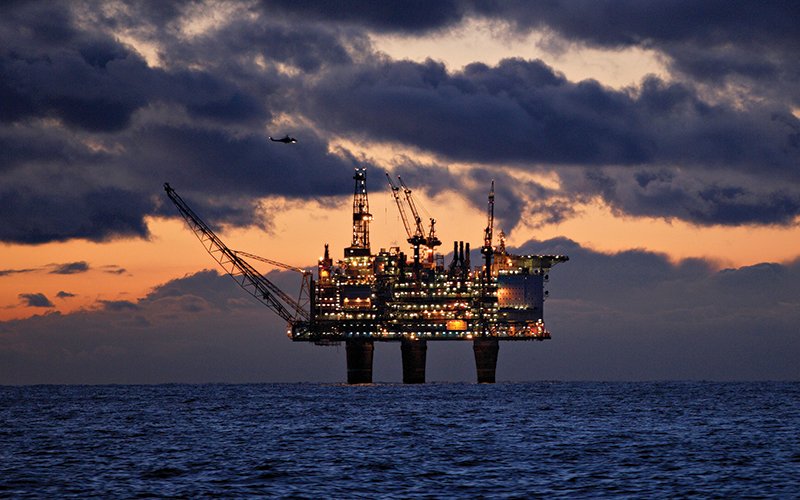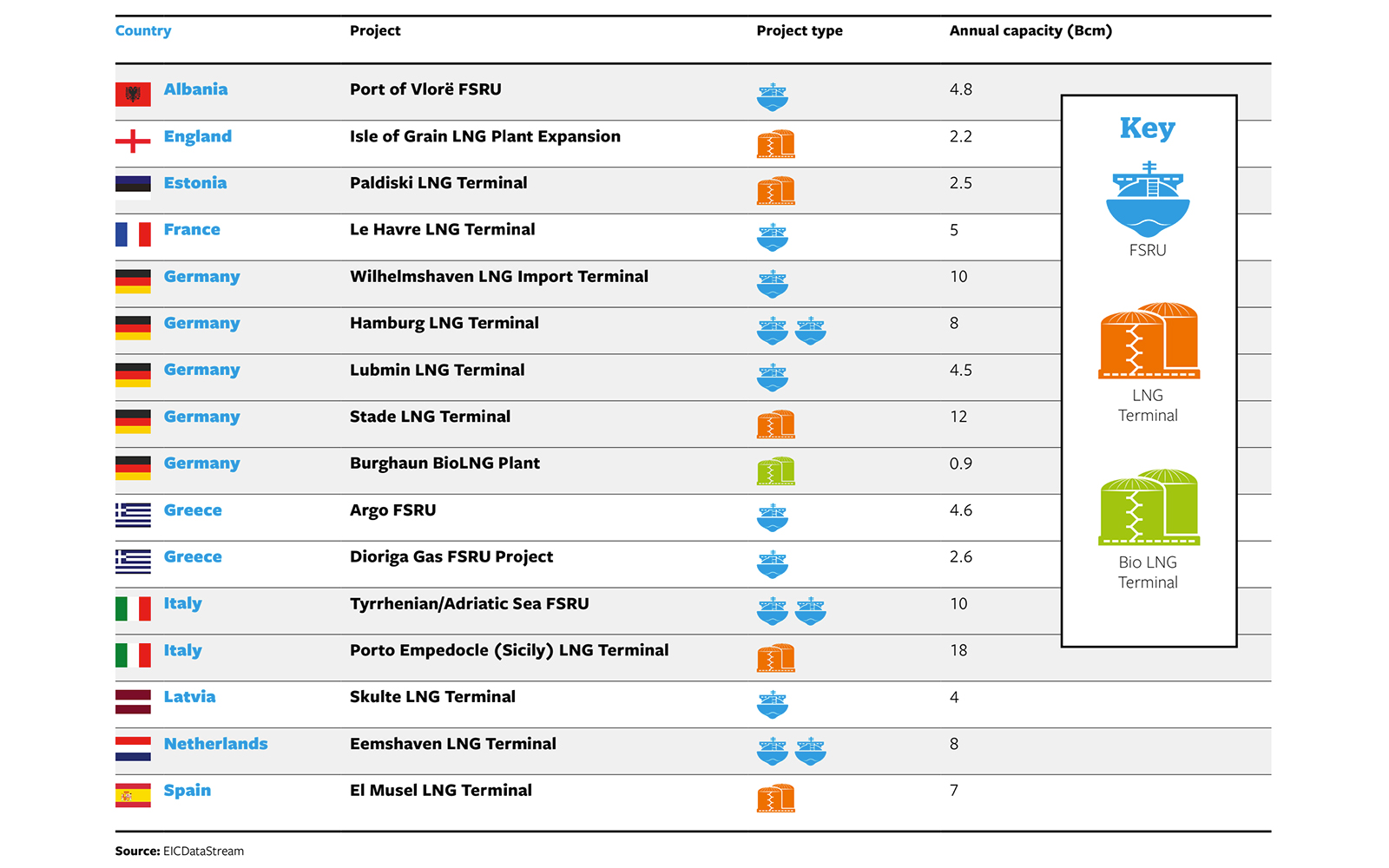Oil and Gas to the rescue
Amid extreme uncertainty and volatility, oil and gas still have a vital role to play in meeting our present energy needs, says Jonathan Dyble

The debate over oil and gas production has reignited in recent months. Countries around the world are facing a deepening energy crisis, exacerbated by a perfect storm of geopolitical turmoil, supply disruptions, high prices and an as-yet-unrealised energy transition.
Europe, in particular, is fronting up to extreme uncertainty. The region has typically relied on Russia for 30% of its oil and 40% of its natural gas imports – supplies that are looking increasingly insecure as tensions grow and sanctions bite following the country’s invasion of Ukraine.
Russia has gradually been cutting its energy supply to Europe for more than a year. Flows through its three main pipeline routes to the rest of the continent were 20% lower in H2 2021 than H2 2020, causing European gas prices to surge as demand spiked due to economies restarting after pandemic shutdowns.
The situation has only worsened in 2022. Under the pressure of European sanctions, Russia cut gas flows to energy suppliers in several countries that refused to make payments in roubles, including Poland, the Netherlands, Bulgaria, Denmark and Shell in Germany. And while many did adhere, they have since suffered from reduced supply as Russia cut the capacity of the Nord Stream 1 pipeline by as much as 60% on 15 June.
Energy security has been overlooked for the last five years, maybe even 10 years. But now, with what’s happened with Russia and Ukraine, governments have had to rethink their model of how they get energy Mark Lamyman, International Business Development Manager, AFGlobal
As a result, gas flows from Russia’s three main pipelines were down 26% month-on-month in June 2022, sending European gas prices spiralling further. Indeed, it is no coincidence that the Eurozone’s 19 countries hit record annual inflation, up from 8.1% in May to 8.6% in June.
Addressing the energy crisis
Against this backdrop of uncertainty, energy security has soared to the top of the agenda. “I think energy security has been overlooked for the last five years, maybe even 10 years,” affirms Mark Lamyman, International Business Development Manager at AFGlobal. “But now, with what’s happened with Russia and Ukraine, certainly in Europe, I think it’s highlighted the need for energy security, and I think a lot of governments have had to rethink their model of how they get energy.”
The EU has committed to ending reliance on Russian fossil fuels by 2027, looking for alternatives such as liquefied natural gas (LNG), imports of which rose 58% in the first five months of 2022 compared with 2021 levels. However, with a limited number of import terminals, Europe has limited capacity to receive LNG.
Renewable energy has been another option, but is still limited in its overall contribution to the energy mix in many markets. In the UK, for example, wind farms were producing just 3.3% of the country’s electricity on 11 July, with gas-fired power plants producing 47.6%.
To boost energy security prospects, several new oil and gas projects are being fast-tracked.
“The oil and gas market is obviously more established,” says Lamyman. “We’ve already got many supply chain players working within oil and gas, so I think it’s more attractive because there are a lot of projects and they’re easier to access. Equally, I am familiar with companies who’ve explained to me that to get into renewables as a supplier is difficult and, again, it’s a new technology that carries more risks.”
Plans for 20 new gas import terminals across Europe have been either announced or accelerated since the Ukraine war began, including Germany earmarking US$3bn for four floating terminals – the country has no such infrastructure at present.
Examples include multi-million-dollar investments in LNG-receiving terminals at the Brunsbüttel and Lubmin in Germany and Eemshaven in the Netherlands – the latter of which has been revived after more than 10 years of inactivity. In Romania, Black Sea Oil & Gas is pressing ahead to be the first company to tap the country’s offshore gas fields.
Pipelines are also an issue that is being looked at. Even with more capacity to receive shipments of LNG, the continent still lacks the infrastructure required to transport it to where it might be needed.
These trade networks are vital, but the continent must also ramp up its domestic production capacity to become more self-sufficient. Indeed, with the worrying possibility of blackouts in Europe growing ever stronger, projects such as Jackdaw and Cambo are being implemented.
North Sea energy boost

Cambo
Located 125km northwest of the Shetland Islands off the shore of the UK, the Cambo oilfield is one of the deepest fields ever discovered in Northern Europe. It is estimated to contain more than 800m barrels of oil equivalent (MMboe).
Jackdaw
Jackdaw is a gas condensate field 100% owned and operated by Shell. Located in the Central North Sea, 250km east of Aberdeen, it is estimated to hold reserves of between 120–250 MMboe.
Following the approval of Shell’s Jackdaw field, five other key North Sea fields are expected to be given approval to begin drilling as part of the UK’s drive to boost supply and lower energy costs. Their combined reserves – Rosebank, Marigold, Brodick, Catcher, Tolmount East and Jackdaw – are estimated to be 62m tonnes of oil equivalent.
Varied goals can be achieved with a diverse energy mix

The licence extension of Cambo on 30 March 2022 and approval of Jackdaw on 1 June 2022 have been met with controversy and debate.
On one side of the fence, such projects are deemed vital to improving energy security in the near-to-medium term, providing an improved social licence to run them. On the other, climate scepticism has been prevalent, demonstrated by the impassioned ‘Stop Cambo’ and ‘Stop Jackdaw’ campaigns from opponents both prior to and after approvals.
The question therefore lies in whether such projects can be rolled out to meet energy security needs in the immediate future without adversely impacting climate goals.
For James Phipps, Managing Director at Cokebusters, it is almost unavoidable for governments to pursue these projects in beating the energy crisis. With potential winter rationing plans being considered and consumers potentially set to be paid for not using energy at peak times, the need is clear.
We currently don’t have the capacity and technology to meet the energy needs in a fully sustainable way. Therefore, it is important that we speed up the investment levels and raise the awareness of this important paradox Torben Harring, CEO, RelyOn Nutec
“All governments have a number of primary national responsibilities including such things as health, physical security, employment, economic prosperity and, of course, energy security,” Phipps affirms. “The UK has a continental shelf which contains sources of proven hydrocarbons. The safe and appropriate extraction of such will serve to satisfy many parts of this agenda and others. To ignore is arguably a dereliction of duty.”
Europe’s race for LNG
Since the beginning of the war in Ukraine, EICDataStream lists 17 projects that have been announced, or were relaunched or accelerated, adding a total of 104.1bn cubic metres (Bcm) of LNG per year.

Phipps also argues that while oil and gas has a reputation for being ‘dirty’, many industry technologies have advanced to the point that such fuels can be stored and used in a much cleaner manner.
Looking at Jackdaw, such improvements are evident. Shell explains that, at its peak, the project is anticipated to deliver 6.5% of UKCS gas production for less than 1% of UKCS emissions, while producing enough energy to heat more than 1.4m UK homes. Further, looking at the UK’s climate targets, Jackdaw’s emissions are expected to account for just 0.013% of the UK’s Fifth Carbon Budget between 2028 and 2032. This is an interesting point, given the debate surrounding the true cleanliness of renewables technologies.
Phipps continues: “The impact of the production of EV batteries, wind turbines and solar panels, as well as the means to transport and construct them, is not insignificant. The production of modern EV batteries, for example, requires significant amounts of precious metals.
“The more complex the ore, the more energy will be needed to extract, and many of these processes can be toxic and polluting. We should therefore accept that there are pros, cons and unwanted by-products associated with all forms of energy.”
We should accept that there are pros, cons and unwanted by-products associated with all forms of energy
James Phipps, Managing Director, Cokebusters
Both Lamyman and Phipps agree that a sustainable and just energy transition which works towards achieving both climate protection and energy security must comprise a diverse energy mix – a view that Torben Harring, CEO at RelyOn Nutec agrees with. Asked what a sustainable energy transition should look like, he makes it clear that energy security and climate protection must be achieved in harmony.
“It must be the ambition to have a world where secure energy sources and climate protection are not opposites of each other,” he says. “We currently don’t have the capacity and technology to meet the energy needs in a fully sustainable way. Therefore, it is important that we speed up the investment levels and raise the awareness of this important paradox.
“While we hope for a fast, sustainable energy transition, we can’t allow that speed will compromise energy security or safety of the people working in the energy industries for that matter.”
Image credit | Shutterstock






Follow us
Advertise
Free e-Newsletter